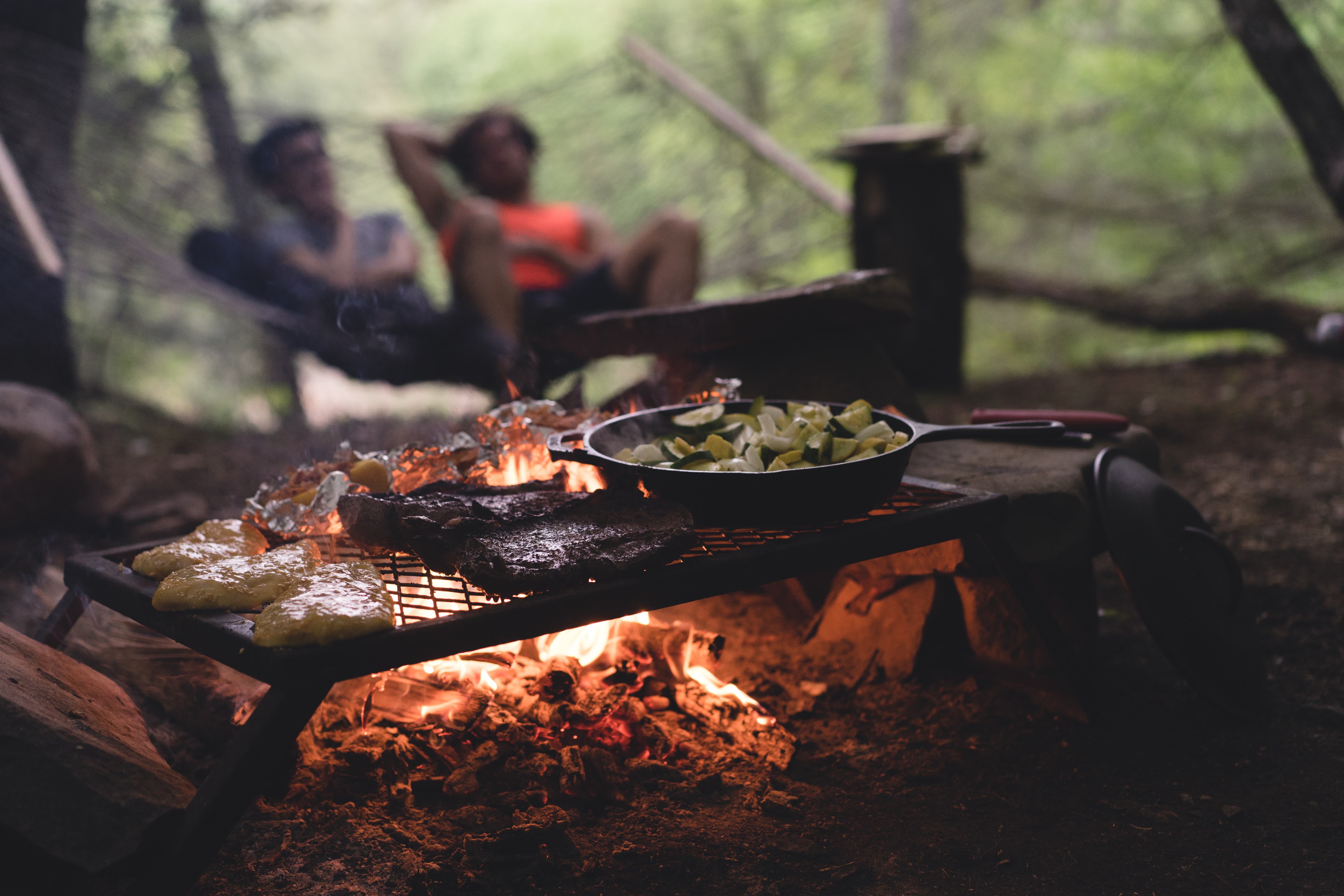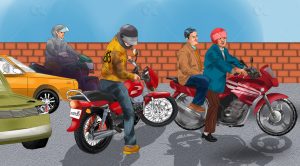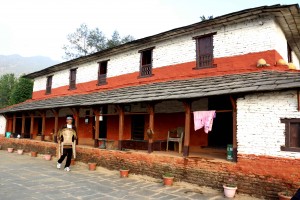It is hard to imagine a more appealing village in Nepal than Marpha. It has clean streets, quaint houses and cheery locals. Open a window of your hotel and you see apple trees. Tourists saunter down the narrow street, awestruck by the preserved cultural gem. It is a place that makes a case for not giving in to crass development.
Sitting in a corner of an arid landscape, it has the look of an oasis. And it is a haven of sorts. The road that was built a couple of years ago has transmogrified architecture in Thak Khola. Old style houses – rammed earth roofs, stone walls – have all but disappeared in many villages. Concrete came with the road, and now it is the material of convenience. But Marpha never put out the carpet for the road. Instead, it put the road several hundred meters away from it, with a buffer of apple orchards. As a result, Marpha is like it was years ago—at least architecturally.
Marphalis have always had a knack for keeping out threats. The original site of the village, a small plateau an hour’s hike west from the current location, is testimony to that strategic thinking. There is only one access route, a narrow trail, to the plateau. On three sides there are precipitous falls. It was a carefully selected site, an anthropologist told me. Bandits from Tibet often raided the villages in the past, so the topography helped to thwart attacks.
Marpha is like it was years ago—at least architecturally. Photos (l-r): Wojtek Ogrodowczyk/Flickr, tewie811/Flickr, Connal Hughes + Anjel Van Slyke/Flickr
The ancestors of modern day Marphalis moved down to new Marpha later, possibly to be nearer to the waters of the Kali Gandaki. Now for a couple of months a year, they find themselves on the path of a torrent of trekkers. Many villages have undergone a character change in the face of tourism. Not Marpha: it is known to anyone who has done the Annapurna trek as a shining example of how to ride the tourism wave without compromising one’s identity. There is Wi-Fi, apple pie and hot baths in the village, but there are also stacks of firewood on the roofs that were stowed by the lodge operator’s parents. When there is a wedding in the village, business is closed for a day to attend the ceremony. (I was made acting lodge operator for a couple of hours when the owners went to a relative’s wedding.)
Read also: In Nepal’s ancient salt hub Dana, a walk past yesterday
In a way, Marpha can feel a little staged. After spending time in Thak Khola’s villages, whose chief characteristic is to provide for tourists – rooms, food, drinks – Marpha can seem too good to be true. On most mornings, the village elders sit near the village’s northern gate, basking in the morning sun, chatting. It looks like a cultural show put on for the visitor. But that is Marpha; its main charm is that it is itself at all times.
And then there is the sensation of having arrived in a place where hurrying is prohibited. Its narrow street (it has only one) is peopled at most times by middle-aged Tibetan women who sit chatting with each other until a newcomer passes by. Then they try to sell trinkets but the efforts are never aggressive. It’s like the selling was an excuse for striking conversations and exchanging smiles.
Marpha’s main charm is that it is itself at all times. Photo: Erik Törner/Flickr.
Step away from the main street toward the mountain face to the east and it’s even quieter. The village monastery is located there. It’s not an impressive building: it doesn’t have the size or antiquity of other more famous monasteries in the region. But it offers nice views. From under prayer flags fluttering in the stiff Thak Khola wind, you can see the verdant fields and a flimsy plume of water wafting down the mountain face across the river.
There is one curious object just beyond the northern end of Marpha. It’s a huge megaphone-like object sitting atop a tall pole, as though there were frequent broadcasts here. But it’s rusty and looks like no sound has come out of it for a long time. It is just as well that that gigantic sound system is silent. The actions of the Marphalis are louder than any words. They have proved that you could be in the center of one of the world’s most popular trekking routes and yet not lose your social and cultural identity.■
Checklist
Getting There

The quickest way to get to Marpha is to take any of the several morning flights from Pokhara to Jomsom. From Jomsom you can either walk for thirty minutes, take a taxi or hire a horse to get to Marpha.
The other option is to take a bus or a 4WD jeep that plies the road between Beni and Marpha. It takes nine hours to get from Beni to Marpha. Nothing, however, compares to trekking to Marpha. The trek begins in Beni. It takes between four to six days to trek to Marpha.
While in Marpha

Village Shrine
On a mountain face directly west of the village is a slab of whitewashed rock. What looks like a careless spillage is in fact an ancient shrine. The site is a short climb from Marpha’s northern gate.
Ekai Kawaguchi Museum
In 1899, a Japanese Zen monk called Ekai Kawaguchi arrived in Marpha. He stayed for two years, preparing all the while to sneak into Tibet, which he eventually did. His story is told in Scott Berry’s book A Stranger in Tibet. The house Kawaguchi lived in has been made into a museum that showcases some of his possessions.
Old Marpha
What was once a strategically located village virtually immune to raids by bandits is now an idyllic swathe of apple and apricot trees. Besides the isolation, mountain views and picturesque scenery, a visit to Old Marpha offers an insight into the region’s history.
Dumba Lake
Sacred and serene, Dumba is a small lake nestled between hills. The barrenness of the landscape accentuates its turquoise blue waters, making it a place to visit for anyone looking for a memorable photo. The lake is sacred to the local communities, so swimming or littering are strictly prohibited. The lake is a two-hour walk from Marpha.
Chairo Gumba
Walking a little more than a kilometer from the southern end of Marpha and crossing the Kali Gandaki River will bring you a copse of tall pine trees. The trees conceal Chairo Gumba, one of the oldest monasteries in Thak Khola. It was built nearly four centuries ago. Its age is evident in the sculptures in the altar room. The room also has some ancient-looking rolls of old scriptures and its walls are covered in frescoes painted decades ago.
![Wikipedia: "Marpha is a village development committee in Mustang District in the Dhawalagiri Zone of northern Nepal. At the time of the 1991 Nepal census it had a population of 1630 people living in 434 individual households.[1] The name itself reflects the "mar" meaning hard working and "pha" meaning people. Tourism and mule rearing are the means of survival of the people of this place. The village is the apple capital in the nation, with Marpha brandy and jams produced from local fruits." Nepalis often refer to Marphas apples with almost religious admiration - claiming them to be the "sweetest and best in the whole world".](https://english.onlinekhabar.com/wp-content/uploads/2016/11/marpha4.jpg)
Where to Stay

Lodging in Marpha is pretty much the same. Hotel Mount Villa (9817114170) offers clean and comfortable rooms. More than that, its owner’s tales about the Khampa warriors is reason enough to stay there. Book rooms in advance if you are traveling in peak trekking season (March-May and October-December).
Where to eat

Dhaulagiri Guest House has the best dal-bhat. For coffee and apple pies and a cozy place to enjoy them in, try Neeru Guest House.
***
More by the author
Sighs and apple pies in western Nepal’s Jomsom
In Nepal’s medieval Newar town Bandipur, a pedestrian’s utopia
Chasing a Himalayan sunrise at Poon hill




![Wikipedia: "Marpha is a village development committee in Mustang District in the Dhawalagiri Zone of northern Nepal. At the time of the 1991 Nepal census it had a population of 1630 people living in 434 individual households.[1] The name itself reflects the "mar" meaning hard working and "pha" meaning people. Tourism and mule rearing are the means of survival of the people of this place. The village is the apple capital in the nation, with Marpha brandy and jams produced from local fruits." Nepalis often refer to Marphas apples with almost religious admiration - claiming them to be the "sweetest and best in the whole world".](https://english.onlinekhabar.com/wp-content/uploads/2016/11/marpha1.jpg)




















